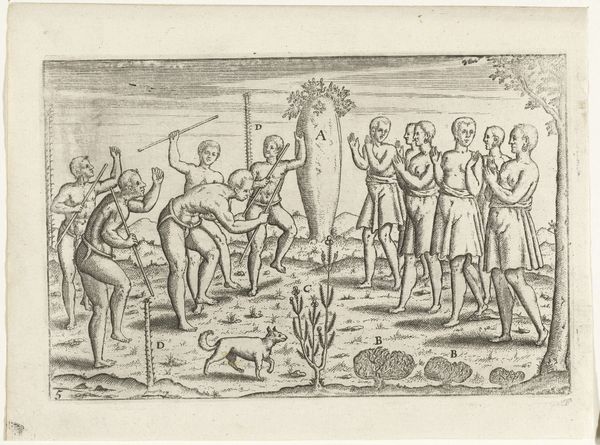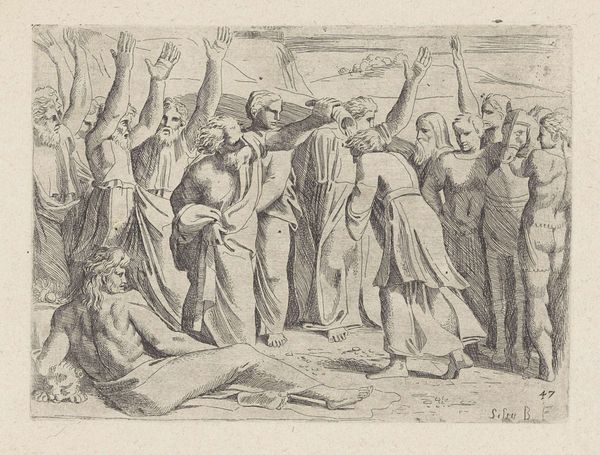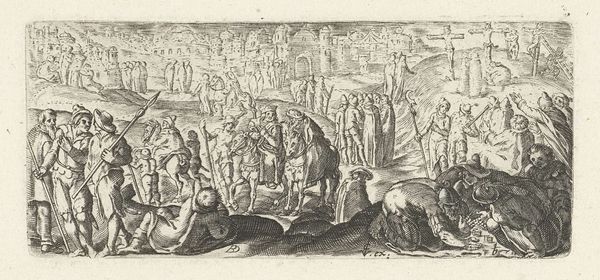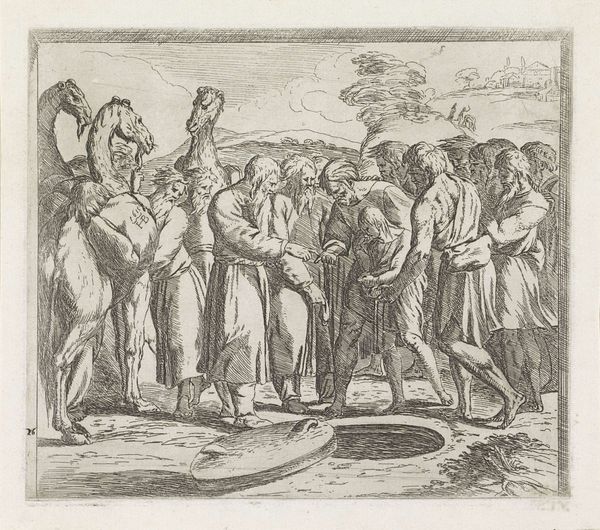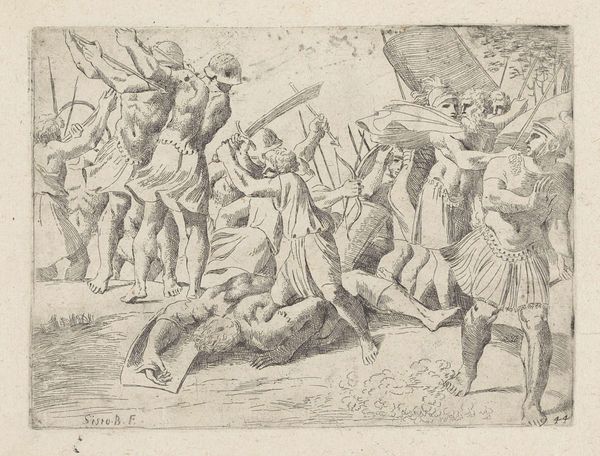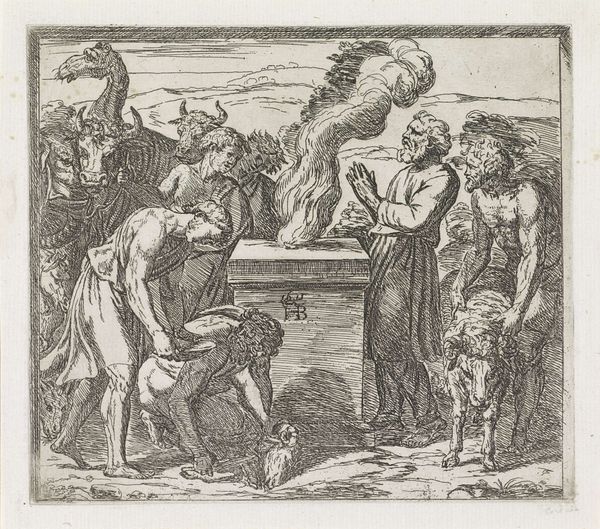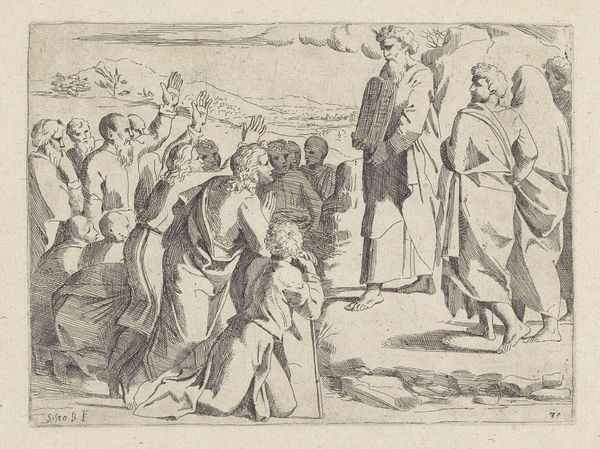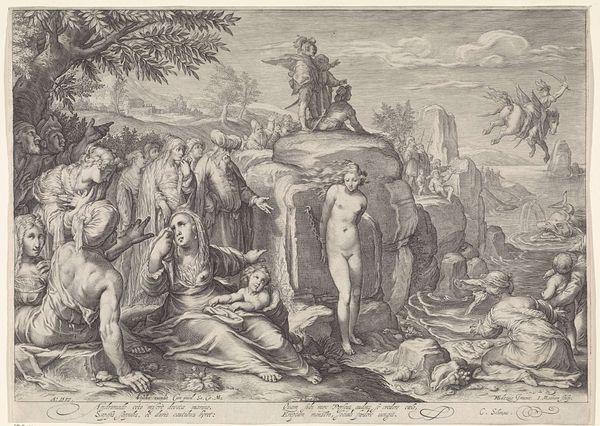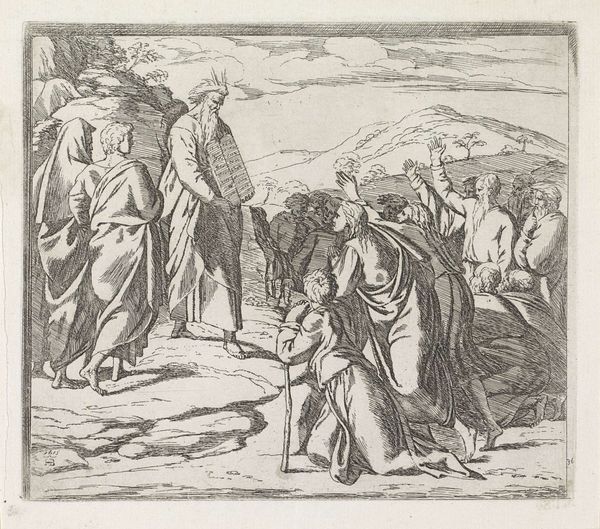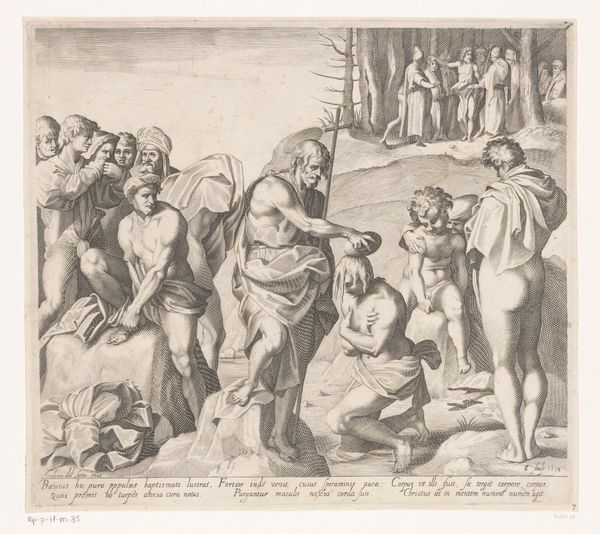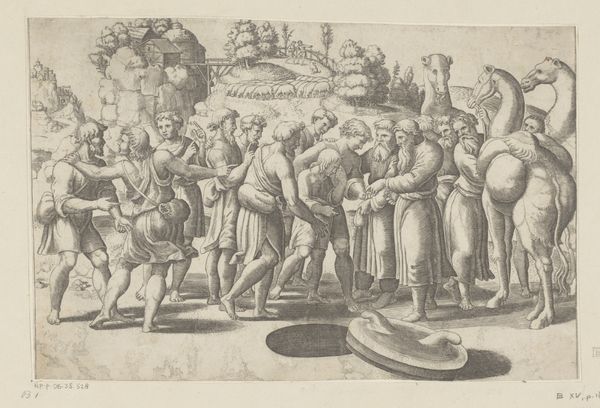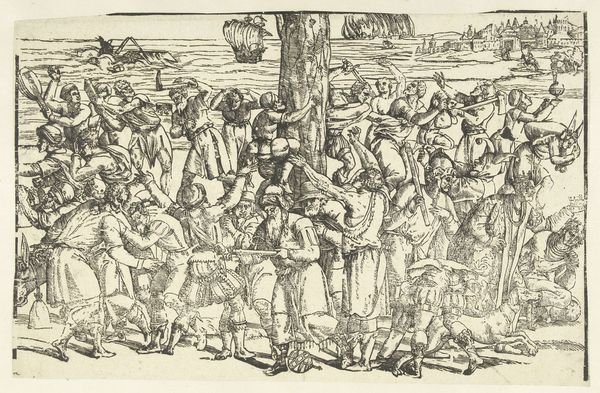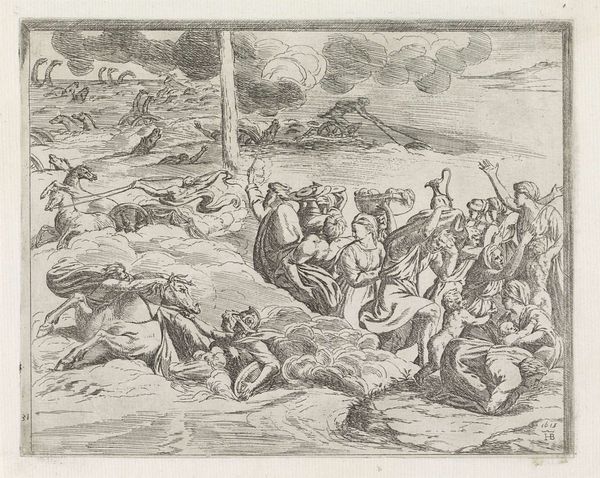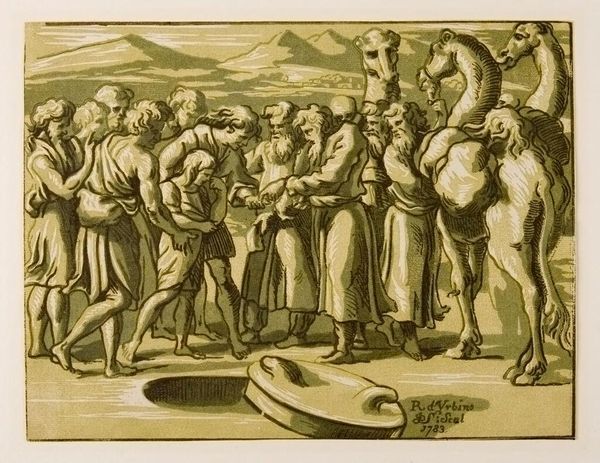
drawing, print, paper, ink, engraving
#
pencil drawn
#
drawing
#
light pencil work
#
narrative-art
#
baroque
# print
#
pen sketch
#
pencil sketch
#
figuration
#
paper
#
personal sketchbook
#
ink
#
sketchwork
#
pen-ink sketch
#
line
#
sketchbook drawing
#
pencil work
#
history-painting
#
sketchbook art
#
engraving
Dimensions: height 130 mm, width 177 mm
Copyright: Rijks Museum: Open Domain
Curator: Sisto Badalocchio's 1607 engraving, "Joseph Sold to the Ishmaelites," offers a fascinating visual narrative from the Book of Genesis. Editor: The density of the figures struck me first – how they are so compactly arranged yet convey this emotional breadth of betrayal and transaction. It almost feels claustrophobic. Curator: Indeed, and that compositional density reinforces the psychological tension. Badalocchio chooses to depict the moment of exchange, with Joseph, seemingly offered for a price to the merchants. Editor: There is the use of line to model form; see how the density and direction of lines are employed to express musculature, tension, and fabric, revealing his virtuosity. Curator: And these Ishmaelites themselves—depicted with camels laden with goods—represent not just traders, but a conduit for Joseph's fate. The camel as a beast of burden is often symbolic of journeys or bearing the weight of fate. Editor: Looking at the arrangement, I see that the faces of Joseph's brothers are turned away from him – their denial amplified by the stark, empty pit in the foreground. Curator: Yes, that open pit is a powerful abyss – a void representing their lack of remorse but also suggesting Joseph’s potential oblivion and what he has escaped. Badalocchio manages to make tangible something usually conceptual. Editor: There’s a beautiful tension in the way the light and shadow play across the surface, adding another layer of psychological depth to this drama unfolding on a modest-sized paper. Curator: Absolutely. In studying the scene we have here, we must consider the historical interpretations which assign this to a timeless commentary on treachery and divine intervention through human choices. Editor: So, in the end, we’re left to reflect not only on skillful craftsmanship, but on a timeless saga, reduced to masterful line work, that speaks volumes about the human condition. Curator: An economic assessment in art with an underlying, eternal cultural narrative about sibling treachery – captured forever.
Comments
No comments
Be the first to comment and join the conversation on the ultimate creative platform.
